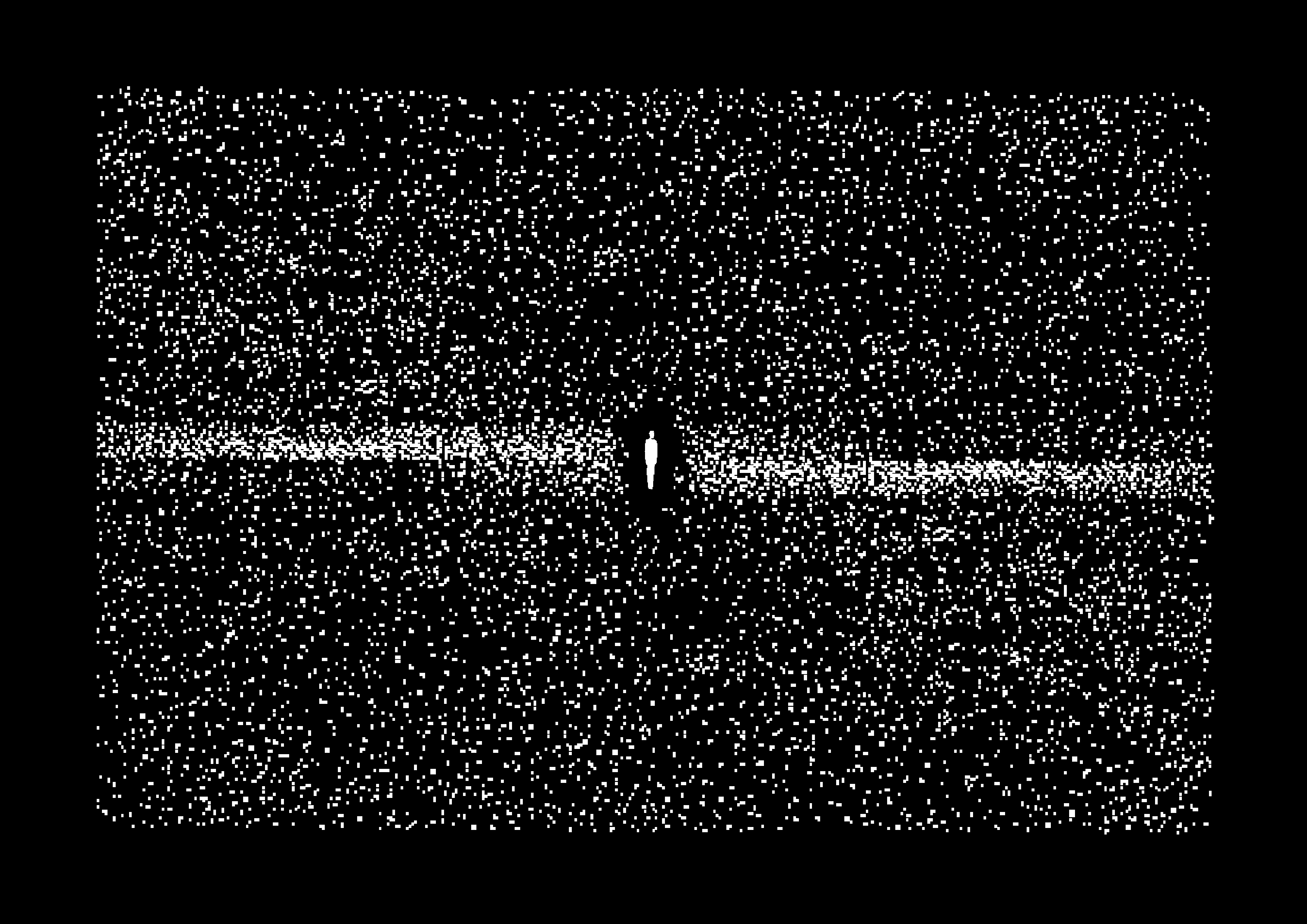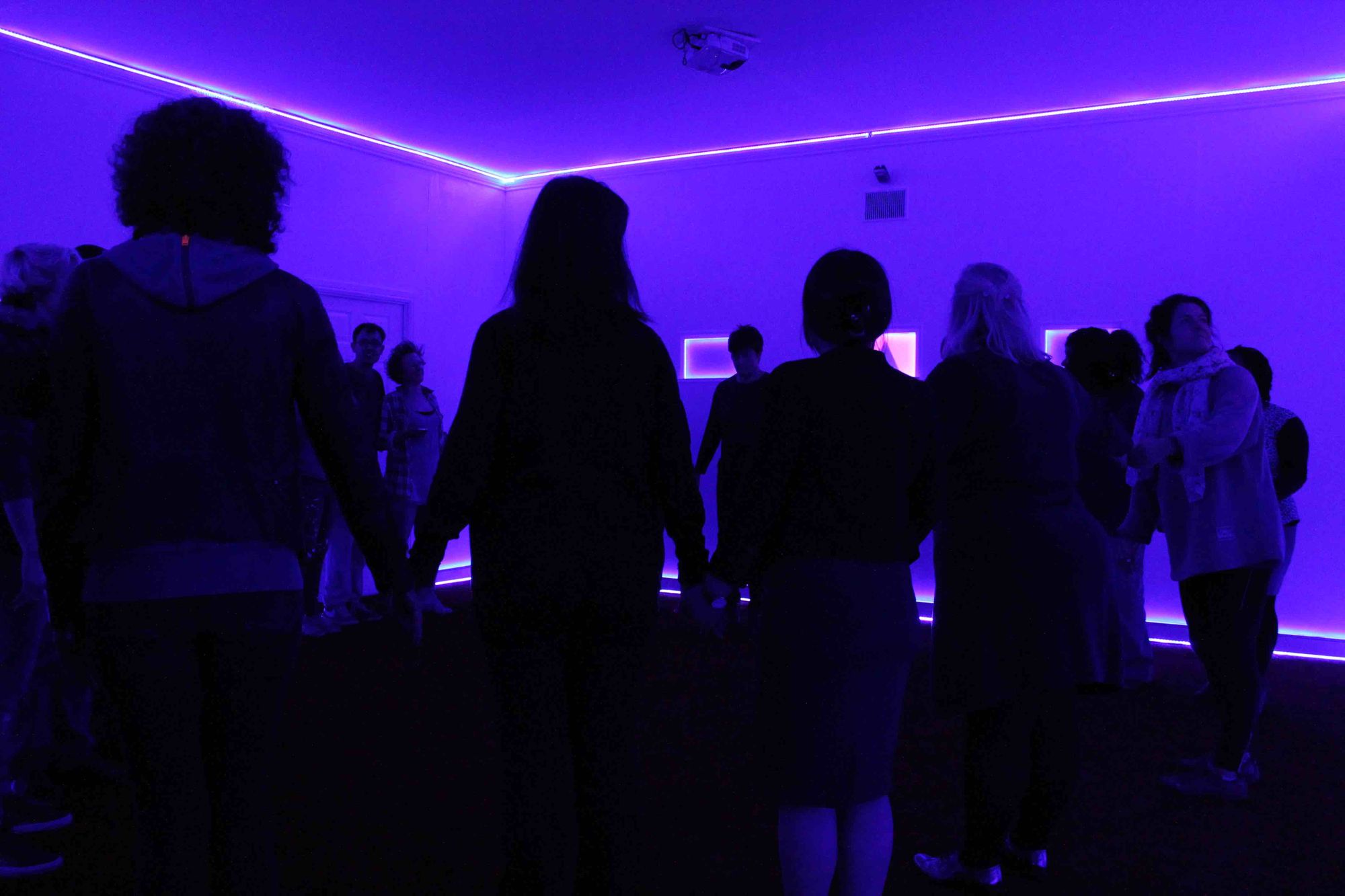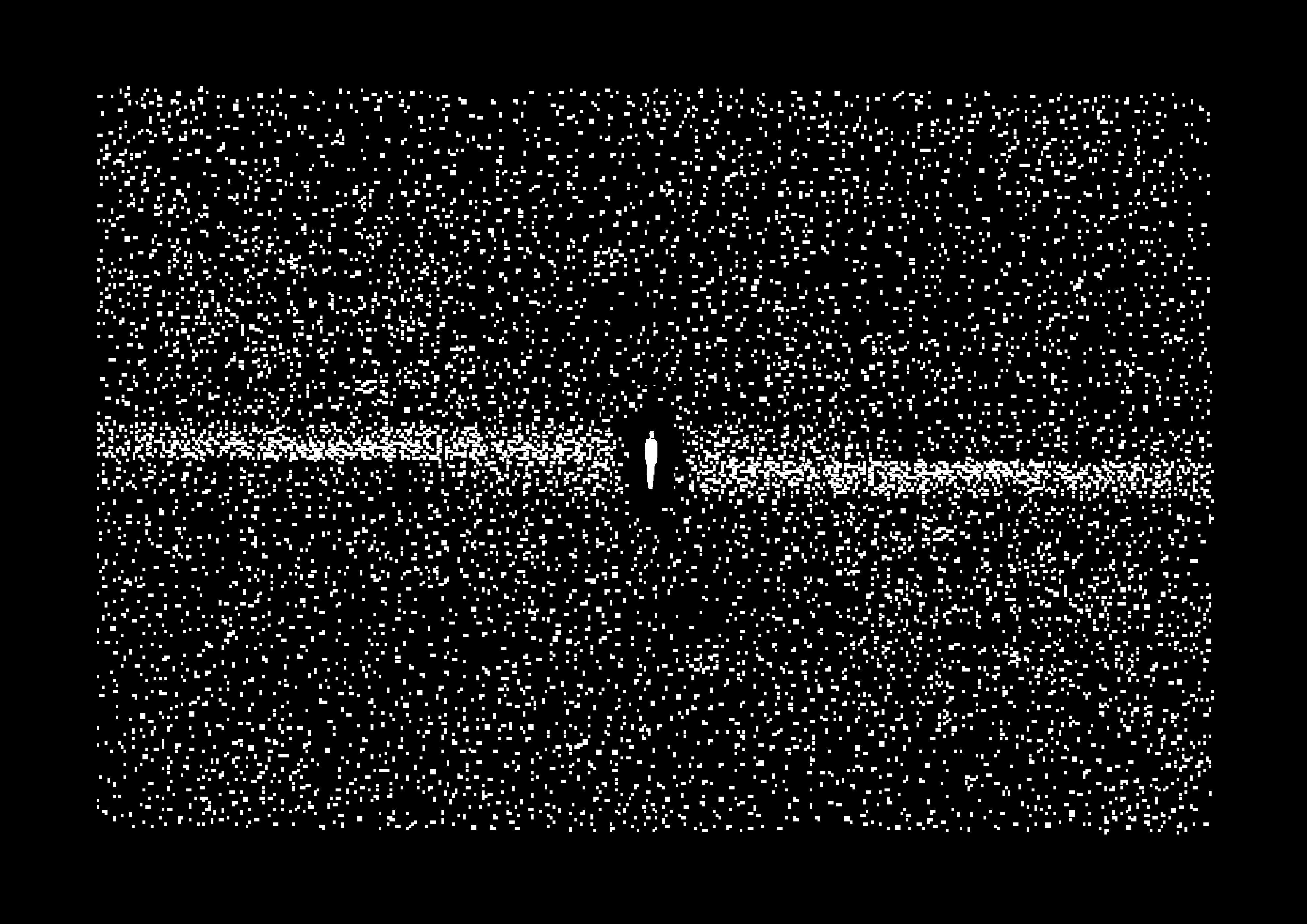Theatre without actors: alternative audience interfaces in interactive theatre
How to communicate with audiences in different ways - here are some practical exercises to start thinking about alternative sensory channels.

You can listen to Rachel reading the full post here…
If you’re making interactive or immersive theatre, you’re going to need to communicate with audience members. They’ll need some kind of feedback loop to let them know how their actions are shaping the action - and suggestions of what they might do next. If you come from a theatre background, you’re probably already thinking of which actors you’ll use and what they’ll say. Lots of great immersive theatre companies -like Punchdrunk, Parabolic and probably some not starting with P- communicate with the audience using skilful actors who adapt to what the audience are doing and shape their journey.
Actors communicating verbally -or talking as it’s otherwise known- is absolutely one way that you can communicate with an audience but it’s not the only way. As part of Fast Familiar’s process, we really try to question all the assumptions we make - so yes, using actors talking is an option, but let’s take a moment to explore some other ‘audience interfaces’.
No time to finish reading this now, or want it as a document to keep?
Pop your email in below and it’s yours!
Trying out different ‘audience interfaces’
Here are three exercises that you can do to start to think about other ways of communicating. I really recommend that you do them because they’re all sensory experiences and you won’t understand how they feel just by reading my descriptions.
1. Charades.
Honestly. Hear me out. This may be a slightly awkward Christmas favourite but it’s a quick illustration of a visual interface. Everyone knows that making a ‘C’ shape with one hand in front of your face while using the other hand to make circles by the side of your face means ‘film’ - even though no one playing has ever used a movie camera that you need to wind! It’s a commonly understood visual interface. Play a couple of rounds and observe what is commonly understood and what needs Oscar-standard acting to convey. Take what you’ve learned and think about what instructions you could give visually. This doesn’t need to be someone miming Free Willy (please, let’s not) - think about visual countdowns or directions to move in.
In Invisible Treasure there was a bonus round where all the screens would display a simple shape (a circle or square) and the 20 or so participants had to collectively form this shape in order to unlock the next level. It originally went into the show as a placeholder but we observed people derive huge satisfaction from being able to organise themselves into a star shape (especially in the second half of the level where they had to do it in the dark) so we kept it in.

2. Hotter/ colder.
There’s regional variations to this so I’ll explain. The basic version is that you hide an object in a room and someone has to find it - when the person is going towards the object, you say ‘hotter’ and then if they’re moving away from the object, you say ‘colder’. If they sit on a chair that the object is beneath, you might say ‘boiling hot!’ By listening, the person can find the object.
The ‘advanced’ version is that you’re not speaking, you’re applauding, and you have in your mind a task that the person should perform (e.g. sitting in a chair, picking up a book and opening it) rather than an object that they need to find. So your volunteer will come into the room and if they walk towards the chair, you start applauding gently; if they follow the cue and sit in the chair you’ll increase the applause. If they pick up the chair, you’ll stop applauding, because this isn’t the task. This is a basic sound interface - the person is getting sonic (but not verbal) feedback.
You can also use music. In Invisible Treasure, we had one stage where the audience could activate different parts in a piece of dance music by congregating by different walls of the space. If everyone was by a certain wall, the bass part would be very loud - they could ‘balance’ the track by moving to different places in the space - and no music at all would play unless someone was in the ‘god’ spot in the centre of the space. It was a super fun stage and we also used it to establish that sound would be a way that people would receive information.
3. Touch train
(otherwise known as Shireen’s water bottle game, because we learned it from artist Shireen Mula and we use water bottles as the objects)
Participants are in groups of 4-6. They stand in a line, one behind the other. Everyone apart from the person at the back has their eyes closed or is wearing a blindfold. Silently -and using touch- the person at the back must direct their team to collect an object that has been placed somewhere else in the space, and bring the object back to put in a pre-agreed location. Give each group a couple of minutes to establish their ‘touch language’ e.g. a tap on the right shoulder means take one step with your right foot, a tap on the left shoulder means take one step with your left foot. Then set the teams off - they will each have their own object to collect, to avoid collisions. It’s nominally a race but the groups who try to rush, rather than tuning into the language of touch, will tend to find themselves in a mess.
Touch is an incredibly powerful interface - which you need to approach with sensitivity, especially after the COVID pandemic, but can create a very rich immersive experience. We made an immersive audio piece called Out of Sight in which blindfolded participants had a binaural audio track but at moments were also given objects or guided to move by facilitators. The piece was about care and independence, and many audience members reported it being a powerful experience.

And why theatre without actors?
I’m not suggesting any of these games play a part in your show, but it’s really worth exploring different options of how to communicate with audiences - and getting out of the cerebral place we often go to when making theatre - and exploring the senses. And what have FF got against actors? you may be thinking. Absolutely nothing (some of our best friends are actors) but immersive experiences where actors tell audiences what to do have an implicit hierarchy which we think can limit audience experience - and prevent a strong sense of a group emerging. You can read more about this elsewhere but we’re really interested in how we can make immersive experiences where the participants primary relationship is with each other, rather than with us or with ‘the artwork’. This is just our preference and there’s lots of people making immersive work with actors which is fabulous because actors are often great people deserving of employment under favourable conditions and high rates of pay. So everybody happy.

